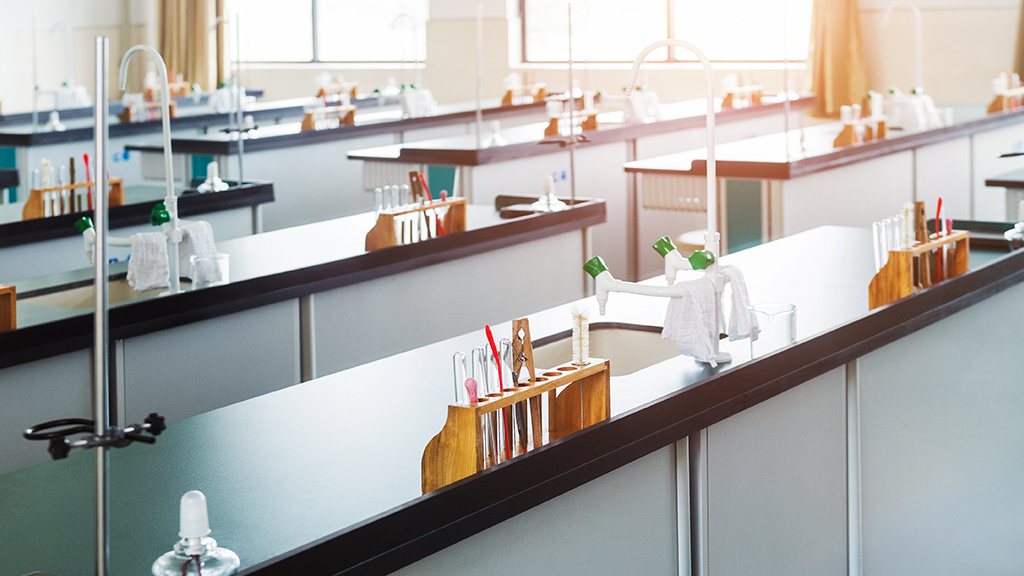Safety Blog
End-of-School-Year Science Instructional Space Cleanup
By Ken Roy
Posted on 2025-06-02

Disclaimer: The views expressed in this blog post are those of the author(s) and do not necessarily reflect the official position of the National Science Teaching Association (NSTA).
Timely Science Instructional Spaces and Associated Areas Housekeeping
School science instructional spaces (laboratory/classroom) and associated areas (storerooms, preparations rooms, etc.) can be unsafe, given exposure to potential biological, chemical, and physical safety hazards and resulting health and safety risks. Even when educators attempt in earnest during the school year to maintain safer instructional spaces and associated areas with each hands-on activity and demonstration, safety issues can still go unaddressed. Shortly before school summer recess is an opportune time to conduct housekeeping activities. Some examples of Occupational Safety and Health Administration (OSHA)–related housekeeping requirements in school instructional spaces and associated areas include clear aisles and exits, proper storage of chemicals, clean work surfaces, spill control, appropriate waste disposal, eyewash and safety shower maintenance, equipment maintenance, and, electrical safety.
Below is a helpful checklist of safety protocols to help teachers make their science/STEM instructional spaces and associated areas safer for employees and students, not only just before the academic year ends, but also to prepare for a safer new school year. The focus of the checklist is to help ensure safety, preserve supplies and equipment, and prepare the instructional spaces and associated areas for the next academic year.
Thoughts and Considerations for End-of-School-Year Cleanup
First, teachers need to reflect on how far their students and instructional spaces have come since the beginning of the current year. A cleanup isn’t just about tidying up; it's also about closing meaningful instructional experiences. In addition, empowering students to participate in the end-of-the-school-year cleanup gives them ownership and teaches responsibility and care for shared instructional spaces. It also reinforces that science is both hands-on and respectful of materials and equipment and environments.
Remember to save high-quality student work, but discard outdated or broken equipment, and prep a few labeled bins or cabinets for a smoother setup next year. Take stock of supplies, equipment, and materials, which can spark new ideas for the next academic year. Make note of what was overused, underused, or missing. This helps with efficient planning and budgeting. Ensure all chemicals are stored correctly, sharp tools are secured, and anything potentially hazardous is disposed of properly according to school or district guidelines and protocols. Attention and planning for care for living plants and animals also must be addressed.
End-of-School-Year Comprehensive Housekeeping List
The following is a suggested housekeeping list of end-of-school-year cleanup protocols for science instructional spaces and associated areas. Following these steps helps ensure safety, preserve supplies and equipment, and prepare the laboratory instructional space for the next academic year.
A. Chemical Storage and Disposal
☐ Conduct chemical inventory; check for leaks, corrosion, and expiration.
☐ Appropriately label any unlabeled chemicals (or dispose of them safely).
☐ Dispose of unwanted/expired chemicals per safety protocols.
☐ Clean chemical containers and shelves.
☐ If gas cylinders are present, ensure they are capped, secured, and stored upright.
☐ Secure all chemicals (flammables, corrosives, etc.) in proper, locked storage.
B. Glassware and Equipment
☐ Wash and dry all glassware thoroughly.
☐ Inspect glassware for chips/cracks; dispose of broken items properly.
☐ Clean and inspect lab equipment (balances, hot plates, microscopes, etc.).
☐ Disconnect and store electronics securely.
☐ Empty and dispose of sharps containers, if needed.
C. General Lab Cleaning
☐ Wipe down lab benches, fume hoods, and sinks.
☐ Clean inside drawers and cabinets.
☐ Empty trash and recycling (including chemical waste bins).
☐ Clean up any slip/trip/fall hazards from the floor.
☐ Clear aisles and exits.
☐ Ensure fume hoods are powered down and clean.
☐ Ensure required fume hoods inspections are planned during the summer, as required by OSHA.
D. Safety Equipment
☐ Test eyewash stations and safety showers.
☐ Plan for weekly flushing of eyewash stations and safety showers with custodial services.
☐ Check fire extinguishers (inspection tags up-to-date).
☐ Restock first aid kit and replace expired items.
☐ Clean/sanitize and store personal protective equipment (PPE; goggles, gloves, aprons).
☐ Discard damaged or expired PPE.
E. Biological Storage, Disposal, and Care
☐ Store biological specimens or dispose of them properly.
☐ Dispose of or refrigerate any living cultures, specimens, or biohazards as per your district's biosafety guidelines. Autoclave materials, if necessary, before disposal.
☐ Assign a responsible adult to oversee animal/plant care over the summer.
☐ Develop a written care schedule outlining feeding, cleaning, health checks, and
environmental maintenance.
☐ For animals/plants not suited to being left alone, arrange for temporary fostering, and/or relocation.
F. Administrative Tasks
☐ Update inventory lists for chemicals, glassware, and equipment.
☐ Note and report in writing via work orders any needed repairs (plumbing, ventilation, gas lines, etc.).
☐ Lock up cabinets, closets, and chemical storage rooms.
☐ Contact the facilities department to confirm appropriate ventilation for chemical storerooms during summer.
☐ Ensure all gas, water, and electricity are shut off (as required).
☐ Conduct a final walkthrough and supervisor and/or chemical hygiene officer approval (as required).
Additional Comments/Notes
The Final Word
Well-organized, uncluttered science instructional spaces and associated areas allow room for curiosity and exploration to flourish again the next school year. Even a simple bulletin board or labeled drawer can inspire future investigations. Teachers need to appreciate the collaborative learning that happened in their instructional spaces. Science instructional spaces are where errors can become experiments, and questions become discoveries.
Submit questions regarding health and safety issues in science/STEM instructional spaces to NSTA Safety Compliance Adviser Ken Roy at safersci@gmail.com.
Follow Ken Roy on X: @drroysafersci. You can also follow Dr. Roy on LinkedIn at https://www.linkedin.com/in/dr-ken-roy-07218713/.
Safety Elementary Middle School High School Postsecondary


